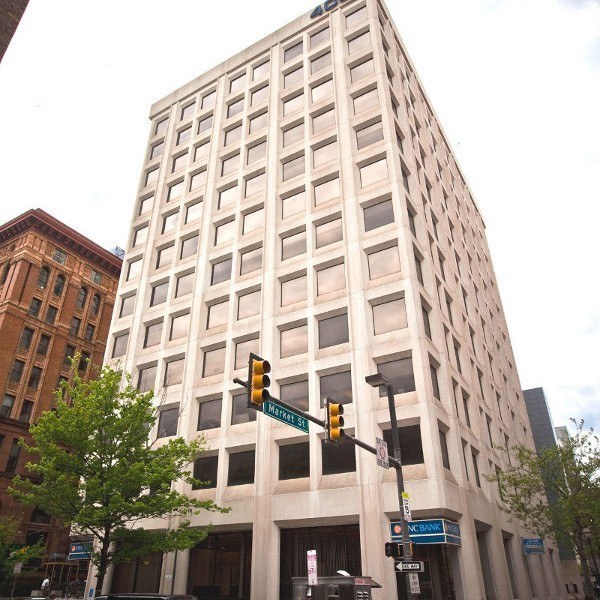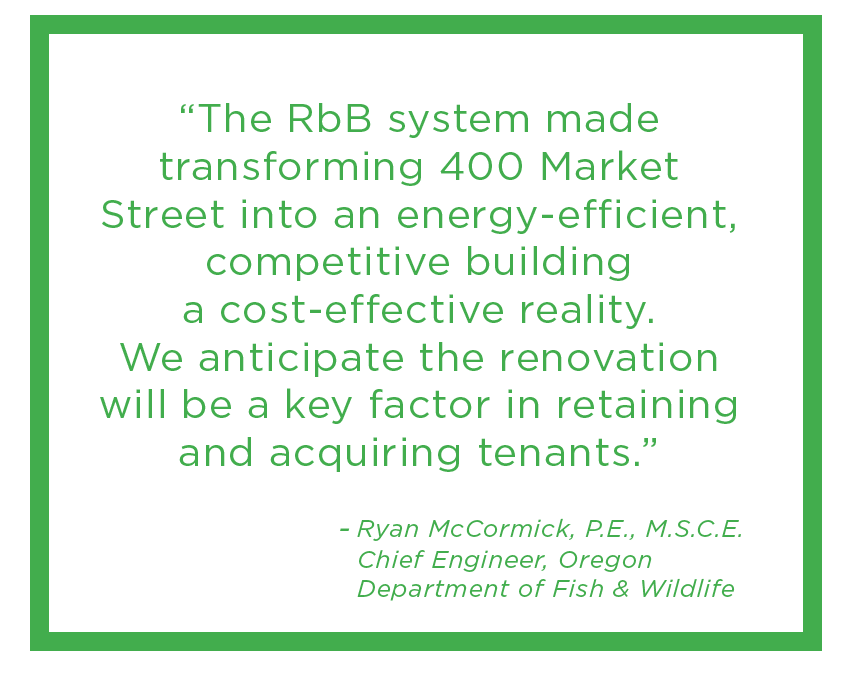This case study has been republished with permission from the Attachments Energy Rating Council (AERC). To learn more about AERC, visit aerc.net.

Project Overview
400 Market Street is a 12-story, 200,000-square-foot office building owned by Kaiserman Company. The building, built in 1972, had already undergone several building energy performance upgrades, but its poor performing single-pane windows were a weak point. The property manager wanted to improve tenant comfort, reduce operating expenses, and improve the building’s ENERGY STAR® rating, while avoiding the costly and lengthy process of full window replacements.
400 Market Street served as a research case study for the U.S. Department of Energy (DOE) from 2012-2013, after the design and installation of the secondary glazing system in 2011.
Kaiserman Company considered a number of options for improving the performance
of 400 Market Street’s windows, including more traditional renovation alternatives. After extensive research, Kaiserman Company selected an interior secondary glazing system with low-E coating and an argon-gas-filled cavity by Renovate by Berkowitz (RbB) for the following reasons:
- Quality and longevity. Secondary glazing systems are permanently installed and have a long lifespan, which Kaiserman Company favored over other low-cost options that would have to be replaced more frequently to maintain the desired level of performance.
- Minimal disruption. Full window replacements require tenants to be temporarily relocated during the installation process, disrupting their businesses in addition to compounding the already expensive costs to the building owner. The RbB system was installed 2-3 times quicker than traditional replacement scenarios, and the occupants experienced only minor disruptions. After installation, occupants reported decreased noise from the street.
- Affordability. The secondary glazing system was roughly half the cost of a traditional window replacement project. On top of that, the building owner was eligible for a tax deduction of up to $.60 per square foot[i], and would save money on future energy bills.
- Thermal comfort. Secondary glazing systems can keep the building cooler in the summer and warmer in the winter. Other options Kaiserman Company considered tended to only improve performance in one season. Energy savings. Low-e glazing acts as a heat mirror, keeping the heat in during the winter and out in the summer while still allowing light through. This leads to decreased heating and cooling bills.
Results

400 Market Street experienced significant energy savings as a result of the secondary glazing system retrofit. The whole building experienced 25 percent building heating and cooling energy savings, and the perimeter offices of the building saw an even more drastic improvement of 35-60 percent.[ii]
Kaiserman Company received comments from the tenants that the building was more comfortable post-retrofit, and occupants on lower levels reported a decrease in street noise. To quantify the improved thermal comfort, DOE compared four unoccupied perimeter offices, two east-facing, and two north-facing, with retrofitted vs. original windows. The retrofitted windows were typically 20 degrees warmer on winter days, and 10-20 degrees cooler on summer days, with reduced day-to-night temperature swings by up to 30 degrees. The study indicated the potential for even more significant improvement opportunities when installed in a building with more glass surface area.
Renovate’s secondary glazing system enabled Kaiser Company to reduce energy use and operating expenses, while significantly improving the comfort of the occupants of 400 Market Street.
[i] Renovate by Berkowitz, Renovate by Berkowitz Transforms 400 Market Street into a Model of Energy Efficiency, 2015.
[ii] U.S. Department of Energy, Performance Comparison of a Low-e Retrofit Window in a Philadelphia Office Building, 2013. http://www.rbbwindow.com/wp- content/uploads/DOE_Performance_Comparison_400_Mar-ket_St_10_23_2013-Final.pdf
